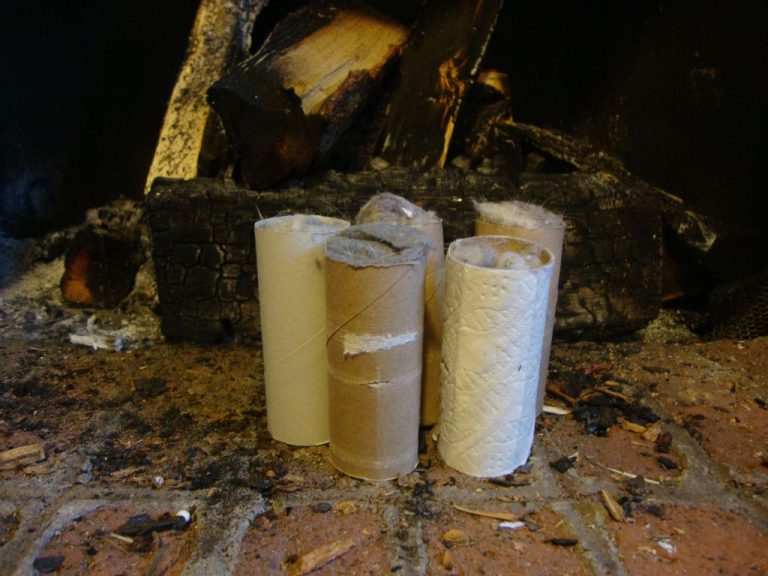What Dissolves Candle Wax From Hair?
It’s easy to get candle wax in your hair accidentally while enjoying candlelit activities. Whether you’re having a romantic dinner or a cozy night in, you lean too close and suddenly your locks are full of stubborn wax. It can be incredibly frustrating trying to remove the wax, as it sticks to hair tenaciously. The wax hardens as it cools, bonding to strands of hair, which makes it difficult to remove. You may be tempted to try pulling out the wax with your fingers, but this can damage hair and cause breaks and rips. Thankfully, there are several simple household solutions that can dissolve candle wax gently without harming your hair. With the right ingredients and techniques, you can remove pesky wax easily.
What Makes Candle Wax Stick to Hair
Candle wax is able to stick to hair due to its unique composition and the structure of hair itself. Candle wax is made up of paraffin wax, stearic acid, vybar polymers, fragrances, and dyes. Paraffin wax has a low melting point which allows candles to liquefy when heated. As the wax cools, it hardens forming a solid bond around the hair shaft.
Human hair has a scaly texture which allows the liquid wax to seep deep into the crevices of the cuticle layer surrounding each strand. As the wax hardens, it anchors itself to the rough surface of the hair cuticle locking it in place. The smooth wax fills in the uneven structure of the hair, attaching strongly as it solidifies.
Additionally, hair is made up of a protein called keratin that has hydrophobic properties. This means keratin repels water and attracts materials like oil, wax, and lipids. The hydrophobic keratin essentially grasps on to the wax as it hardens, acting like glue between the wax and hair strand.
Trying to Pull Off the Wax
When candle wax hardens in hair, it can feel tempting to simply try pulling it out. However, this is not recommended. Pulling at hardened wax can damage the hair follicle and even rip out entire strands of hair. The wax adheres tightly to individual hairs, so forceful pulling risks breaking the hair at the root or causing pain and injury to the scalp.
Candle wax is designed to adhere strongly as it hardens. So pulling chunks of hardened wax can be difficult and painful. Attempting to rip out pieces of wax by force often fails to remove all of the wax. Bits and pieces end up left stuck in the hair, requiring further removal methods anyway. Forceful pulling also risks damaging hair or tearing hair out in clumps.
Instead of pulling at the wax, it is gentler on the hair and scalp to use chemical dissolving agents or methods that gently loosen the wax. Pulling often fails to fully remove the wax while also causing additional hair damage and pain. Leaving the wax in place and using dissolving products or techniques reduces the harm caused by trying to tear out chunks of hardened wax.
Hot Water Method
One of the most effective home remedies for removing candle wax from hair is using hot water. The heat from the water helps melt and loosen the wax so it can be more easily removed from the strands of hair. Here are the steps for using hot water to get rid of candle wax in your hair:
- Start by bringing a pot of water to a boil on the stove. You’ll need enough hot water to fully saturate the wax-covered section of hair.
- Once the water is boiling, carefully pour it over the wax to melt it. Try positioning your head over the sink or in the shower to contain the dripping wax and water.
- Gently massage the wax-coated hair as the hot water pours over it to help break up the wax. The goal is to liquefy the wax so it releases from the hair.
- Comb through the hair with a wide-tooth comb while the wax is still melted and pliable. This will remove chunks of wax and separate the strands.
- Shampoo as normal once most of the wax is removed. This will wash away any remaining bits of wax residue.
- Repeat as needed if some stubborn wax still clings to the hair. The hot water should dissolve it with repeated applications.
The heat from the water melts the wax quickly and makes it much easier to comb and wash the wax away. Just be cautious not to burn or scald yourself as you pour and handle the hot water. This simple hot water method can save you from an unwelcome wax-cutting hair appointment.
Baby Oil Method
One of the most popular and effective home remedies for removing candle wax from hair is using baby oil. The key is that the oil helps dissolve and loosen the wax, making it much easier to remove.
Start by gathering a bottle of baby oil, an old towel, a wide-tooth comb or brush, and a bowl of warm water. Work in sections, gently rubbing a liberal amount of baby oil into the waxy area of hair. Let it soak for 2-3 minutes. This gives the oil time to break down the wax.
Next, use the wide-tooth comb to gently lift and loosen the softened wax clumps from the hair strands. As you remove pieces, transfer them to the towel. Once you’ve combed out as much wax as possible, rinse the section thoroughly with warm water. The oil and water will help carry away remaining sticky residue.
Repeat this process in other waxy areas until all the candle wax is removed. Finish by shampooing normally. The baby oil is gentle and moisturizing for hair. While this method takes more time and patience than hot water, it usually gets the wax out without damaging hair in the process.
WD-40 Method
This solvent-based spray can prove very effective at getting rid of candle wax stuck in hair. WD-40’s main ingredients include mineral oil along with some lubricants and solvents, making it able to break down wax and grease. Here are the steps to use this method:
- Start by working the wax-covered hair into sections. Apply a liberal amount of WD-40 spray onto the waxed areas.
- Let it soak in for 2-3 minutes. This gives the solvent time to break down the wax.
- Use an old toothbrush or fine-toothed comb to gently scrub at the wax. The WD-40 will loosen the wax and allow it to be brushed out.
- Once the wax is gone, wash the hair thoroughly with shampoo. WD-40 can leave behind an oily residue so shampoo multiple times if needed.
- Finish by conditioning the hair. The WD-40 may cause dryness so conditioner helps add moisture back.
WD-40 is inexpensive and easy to find at most hardware stores or supermarkets. It’s a handy product to have for dissolving wax. Just be cautious using chemicals on hair and wash thoroughly after.
Mayonnaise Method
Mayonnaise is an effective home remedy for removing candle wax from hair. The oil and egg in mayonnaise help to dissolve and loosen the wax so it can be combed or washed out more easily.
Start by covering the waxy area of hair generously with a thick layer of mayonnaise. Massage it into the hair and wax thoroughly. Let it sit for at least 15-30 minutes so the mayo has time to fully penetrate and break down the wax.
Once the waiting time is up, use a fine-toothed comb to gently remove excess chunks of wax from the hair. The wax should comb away much more easily after being saturated in mayo. Follow up by washing the hair as usual with shampoo and water.
The oils in the mayo help dissolve the wax, while the egg proteins help trap and remove wax particles from the hair shaft. Repeating this simple mayo hair mask a few times often does the trick for complete wax removal. It’s an inexpensive and non-toxic remedy worth trying before cutting out waxed hair.
Ice Cubes Method
One way to help remove candle wax from hair at home is by using ice cubes. The idea is that the ice will harden the wax, making it easier to chip or break off the hair shaft. This works best for small clumps or pieces of dried wax rather than large melted sections.
Start by wrapping a few ice cubes in a paper towel or clean cloth. Run the ice over and around the wax in your hair, holding it there for 5-10 seconds at a time until the wax feels hard. Don’t rub the ice directly on your hair.
Once the wax is frozen and solidified, try to gently break it off the hair shaft. You may need to repeat freezing and chipping away at the wax in layers until it’s fully removed. Avoid pulling hard on your hair.
The benefit of using ice is that it’s readily available and avoids using chemical products on your hair. However, ice works best on smaller, already dried bits of wax. It likely won’t remove large melted sections in one attempt. Patience and working in stages is key when using the ice method.
Hair Conditioner Method
Using hair conditioner is an effective home remedy for removing candle wax from hair. The conditioning agents in hair conditioner help to loosen the wax’s grip on the hair shaft. Conditioner also helps to moisturize the hair and prevent it from becoming dried out.
Work a generous amount of hair conditioner into the waxed area of hair. Massage the conditioner into the hair roots and along the strands. Let it sit for 5-10 minutes so the conditioner has time to penetrate the wax. Then, gently work the hair between your fingers to loosen and flake off bits of wax.
Rinse out the conditioner and wax remnants with warm water. You may need to shampoo after to remove any residue. The conditioner will make removing the wax much easier by lubricating the hair. Repeating this process a few times can help eliminate stubborn candle wax.
Hair conditioner is likely already in your bathroom cabinet, making this a convenient solution. It also leaves hair soft and detangled. Just be patient and gently work the wax free for best results.
When to Seek Professional Help
In severe cases of candle wax getting stuck in hair, it may be necessary to seek professional help from a salon or hair stylist. Here are some situations where professional wax removal is recommended:
- Large clumps of hardened wax that cover wide areas of your hair. Trying to remove the wax on your own could risk damaging large sections of hair.
- Wax clinging close to the scalp. This can be painful and tricky to remove yourself.
- Hair that is very tangled up with wax. Detangling the hair yourself may cause excessive breakage.
- Colored wax, especially if it has stained the hair. Professional products are better equipped to dissolve colored wax residue.
- Wax stuck in chemically treated or damaged hair. This hair is more fragile and requires gentler cleaning.
- Wax in hair extensions or wigs. Seeking professional help will reduce the risk of damaging expensive hair extensions or wigs.
In these situations, it’s best to enlist the help of a professional stylist. They have access to commercial grade wax removal products and tools that won’t further damage your hair. Let them assess the situation and safely clean your hair.




